


Tesoro might not be a name PC gamers are familiar with outside of Asia and Europe, but they've recently introduced their range of peripherals to North America. We spent some time with their Colada mechanical keyboard, Shrike laser mouse and Kuven Pro true 5.1 headset.
A sword emblazons the Colada's packaging. Its name, and one shared with the keyboard itself, references "the most famous sword of Spanish mythology." But more apt a depiction would be a bludgeon, as Tesoro's most expensive mechanical keyboard is also its most hardy.
One of the core differentiators between the Colada and its siblings is construction. The angular enclosure is composed almost entirely of brushed aluminum, in either silver or black varieties (Saint and Evil respectively). The resulting figure looks durable, like a tool you could take to war. In our grim future where roving bands of survivors wield only keyboards as weapons, the Colada's hefty weight afforded by its metal would certainly serve that purpose.
That morrow wouldn't be complete without neon flair. The Colada shines in this regard, quite literally, with LEDs brightly illuminating its keys and a strip along each side. The latter can be customized from a wide assortment of colors and stored to five profiles. The keys only stay a solid white, but they can be toggled from total coverage to a select few highlights.
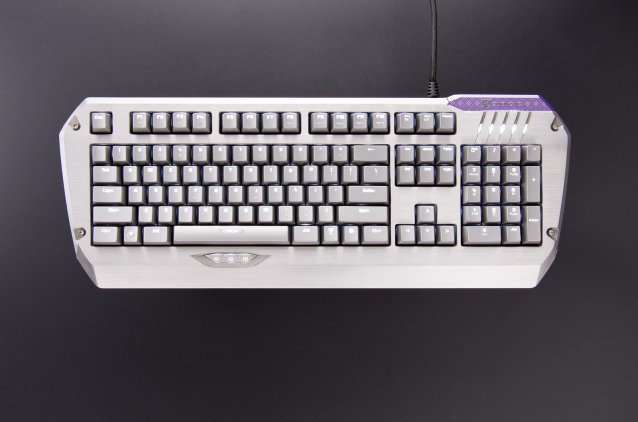
The Colada follows the your standard 104-key layout with a few notable additions. Three macro buttons (H1-H3) sit beneath the space bar. Live macros can be recorded, set and enabled via two further buttons situated in the upper right corner of the keyboard. Media controls are mapped as secondary functions to F1-F6 and activated with an Fn key. F8-F12 are similarly used to switch profiles. Combining Fn with 8 and 2 on the numberpad cycles the LED backlight.
Its rear houses a USB hub, featuring two USB 2.0 ports in addition to 3.5mm audio inputs for headphones and a microphone. The keyboard's thick, braided cable ends in four connectors to power those inputs. For extra juice, a DC-IN jack supports an external power supply.
Our sample came with tactile Cherry MX Brown switches. Red, Black and Blue switches are also available. Sadly, the keys themselves don't have the same welcoming feedback. The texture of the plastic feels rough on the fingers. Palms don't fare any better while the keyboard is laid flat. Its height coupled with a sharp bottom edge create an unpleasant drop-off. No wrist rest comes with the Colada, though the feet underneath can raise its profile to completely relieve that discomfort.
The Tesoro Colada stands out on a desk as a rugged piece of hardware. Whether it stands out enough to justify spending $170 versus other selections depends on what you want from it. Its USB/audio hub, live macro recording and tough enclosure are great for hardcore gamers on the go. If those aren't things care about, then the Razer BlackWidow Chroma and Corsair K70 RGB offer stiff competition.
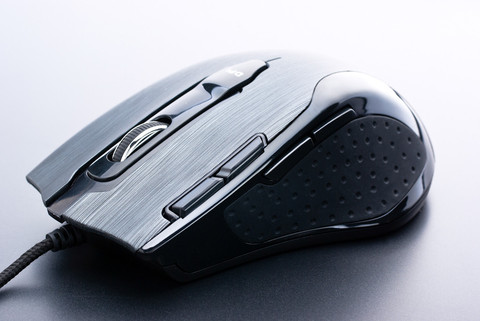 The Tesoro Shrike is an entry-level gaming mouse, but for $50 it boasts healthy accoutrement. It includes a 1000Hz polling rate, a 5600 DPI laser sensor, 128Kb of internal memory, support for five profiles, eight programmable buttons, a weight system, and customizable LED lights. However, does a strong list of features automatically translate into it being the best bang for your buck, or is this a case of quantity over quality?
The Tesoro Shrike is an entry-level gaming mouse, but for $50 it boasts healthy accoutrement. It includes a 1000Hz polling rate, a 5600 DPI laser sensor, 128Kb of internal memory, support for five profiles, eight programmable buttons, a weight system, and customizable LED lights. However, does a strong list of features automatically translate into it being the best bang for your buck, or is this a case of quantity over quality?
The Shrike's form factor is a familiar but comfortable right-handed design. Its sides slope downward giving your thumb and pinky a place to rest. Rubber material coats those areas, providing a soft grip that resists dirt buildup better than harder surfaces. The rest of the mouse is plastic, but its top gives the illusion of metal with a brushed gray finish.
Six of the eight programmable buttons are where you expect. Two (defaulted to back and forward actions) are along its left side, your left and right mouse buttons, a depressible scroll wheel, and a single DPI switch below it. The final two are situated on the top left edge. Its surprisingly good placement allows your index finger easy access to them.
Unfortunately, its overall construction errs on the side of cheap. The buttons creak to the touch. The scroll wheel wobbles noisily. Its ribs flex inward with a small amount of pressure, which has the additional effect of activating the back and forward buttons. I wouldn't advise attempting the same with the left and right clickers. They'd be liable to snap like twigs.
It's all rather light, too. The four included, bottom-fed weights do little to alleviate that sensation. And its actual light, an LED that shines above the DPI switch, is barely perceptible. It would have been nice if it at least changed color depending on what sensitivity you've selected. There's sadly no indication for that anywhere on the mouse. As is, it doesn't serve much purpose, not even to look cool.
Its software has a fair sum of options, from button remapping, polling rates, liftoff distance, 216 LED colors, macro creation, control over five different profiles, and five DPI settings to customize. But its sensitivity is where it continued to disappoint me. There are no custom values to set and only eight choices (400, 800, 1600, 2400, 3200, 4000, 4800, and 5600). As someone who prefers finer changes in DPI and a value not of those eight, the Shrike was either too slow or too fast.
The Shrike has a lot under the hood. It's a shame then that the hood feels like it could crumble like paper in a collision. Furthermore, the strict DPI settings do it few favors. As such, it's hard to recommend over the $40 Corsair Vengeance M65.
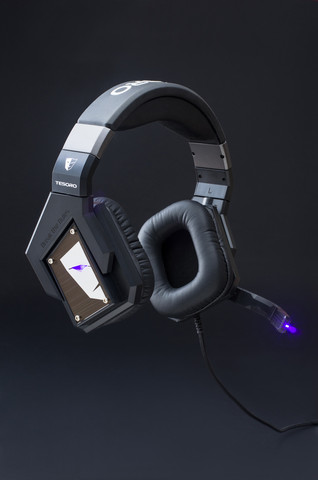
The most exciting device of our roundup is the Kuven Pro, a gaming headset with multiple drivers per earcup in an attempt to provide true 5.1 surround sound. For $109, few others perform quite as well.
The Kuven Pro is aggressively styled. The oversized, square earcups are complimented with sharp angles at their tops. Centered aluminum plates are held in place with metallic screws for a utilitarian look. Half the Tesoro logo is painted on each, the eyes glowing purple from LEDs.
The upper joints are sturdy plastic. The headband itself is wrapped in leather with the Tesoro name etched in silver to the fabric above. Below holds very thick memory foam. The earcup cushioning is made of the same material. Together they make for an incredibly comfortable fit. I never felt the need to stretch my lobes after a gaming marathon, a feat I don't encounter often.
The hearty, rubber-housed microphone is non-removable but can fold up out of view. An LED strip at its tip lights up when it's active. Thankfully, it's not in a visible position to distract the wearer.
Rounding out the physical package is a desktop control station. Three buttons at its base toggle between channels (master, front, rear, center and subwoofer) and accessible mute controls for both the microphone and speakers. A giant knob in the center adjusts volume. The Kuven Pro connects to the station via a braided HDML cable. The little box is then powered by a USB cable to a PC. Aside from installing the software, setup involves selecting the default playback and recording device from Windows' audio control panel.
It delivers on sound quality, too. Mids are pronounced, ensuring vocals and dialogue aren't obscured. The rest of the spectrum is equally clear. It's fully capable of pushing out minute details, letting them be heard rather than drowning them in overemphasized bass as gaming headsets are wont to do. On the flipside, the Kuven Pro isn't for those who desire pounding lows.
The Kuven Pro's focus on clarity suits it incredibly well for the task of discerning gunshots, footsteps and voices in games. That said, don't buy it solely for its advertised "true" surround sound. The rear and front channels aren't easily separated, likely due to the limited distance between drivers, though the experience is still crisp and absolutely immersive. If you don't want to engage those multiple drivers at all, it can be configured for stereo or virtual surround.
Its signature is somewhat flat for music and movies, lacking the energy to truly bring them forward. It's not a terminal condition, however. The software features an equalizer to help add some color, and unless you're a serious audiophile the Kuven Pro's musical performance is more than acceptable. I did not find it fatiguing, even after listening to entire albums.
It's worth mentioning that after the initial few hours, one of the drivers in the left earcup produced constant crackles and hisses. This occurred even with no audio playing. After some time that issue disappeared and I haven't heard it since.
Beyond that hopefully temporary nuisance, the Kuven Pro is at the top of its class. Its fierce chasis, excellent comfort, and fine detail reproduction make it one of the better PC gaming headsets I've used in recent memory.




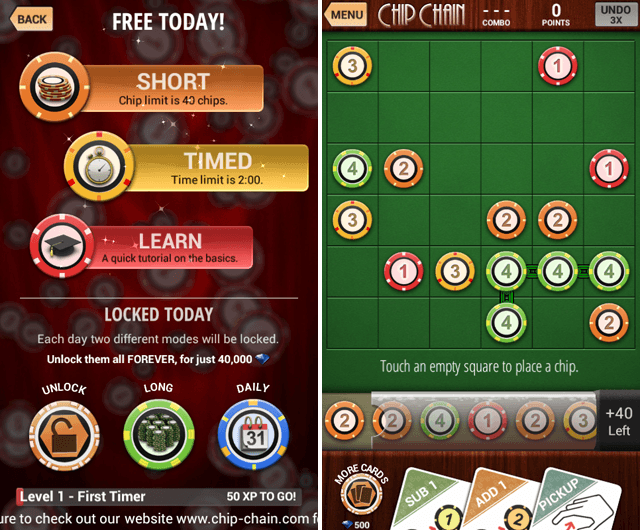 Forget Candy Crush - Play Chip Chain Instead
Forget Candy Crush - Play Chip Chain Instead Top 10 Best Platform Games for the Xbox One
Top 10 Best Platform Games for the Xbox One Pearl Jam confirms Latin American tour 2015
Pearl Jam confirms Latin American tour 2015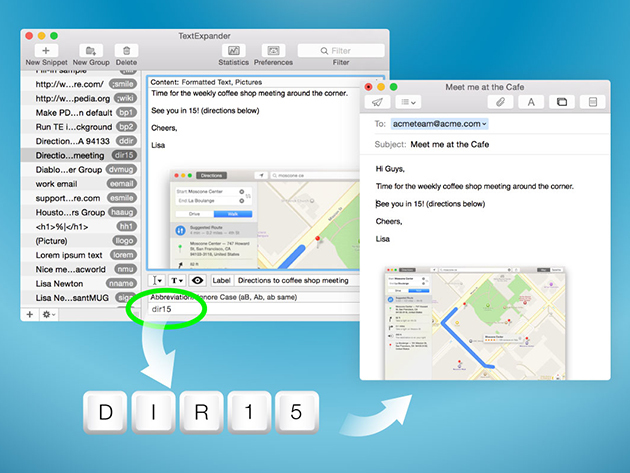 You Can Get TextExpander 5 for Mac For Just $22 For A Limited Time
You Can Get TextExpander 5 for Mac For Just $22 For A Limited Time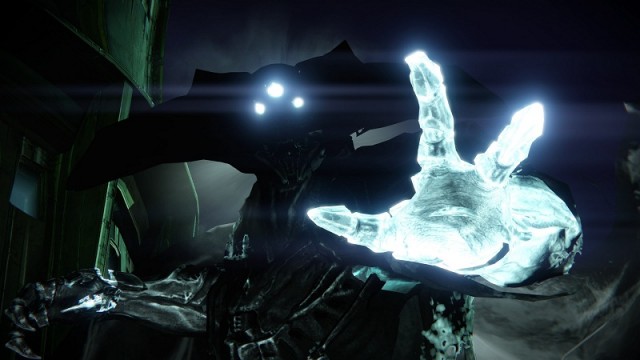 Destiny: The Taken King - How to use the Dreadnaught Map Glitch
Destiny: The Taken King - How to use the Dreadnaught Map Glitch